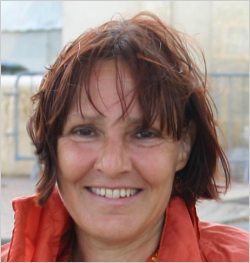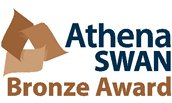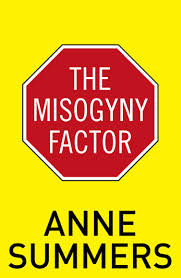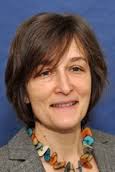
Su White is part of the Web and Internet Science research group in ECS. Her research interests include research-led learning, the effects of technology on education and learning, and web science.
The need and value for balanced and diverse teams and equality of treatment of all staff are two principles which might seem rather challenged in academia when the representation of female academics as a proportion of the whole is considered.nd web science.
This year has seen a widespread and continued series of small celebrations for prestigious Athena SWAN Awards around the University achieved by a range of academic areas. Six academic areas and the university as a whole have all gained bronze awards. There are three more applications in the pipeline, and two more areas are exploring the possibility of making applications.

Athena SWAN is an initiative designed to advance the representation of women in science, engineering and technology, mathematics and medicine.
Currently there are no STEMM subjects at Southampton that have equal proportions of male to female academic staff. Furthermore the numbers of female staff at higher pay grades are significantly reduced at.
The figures for the rounded percentage of female staff in STEMM is as follows: overall 41%; 49% Grade 4; 47% Grade 5; 31% Grade 6; 21% Grade 7.
This looks quite respectable, however, when you discount colleagues from medicine, health sciences and psychology the picture is less rosy. Overall 33% are female. The breakdown is 41% Grade 4; 37% Grade 5; 23% Grade 6; 17% Grade 7.
In a desire to secure recognition of good practice there has been a massive effort on campus over recent months to look at the university workplace alongside the student experience, to think about the way we balance the gender scales; and how we could do it better.
The university successfully renewed its charter this summer, and the self assessment team chaired by Professor Iain Cameron Dean of the Faculty of Medicine, have declared the ambition to achieve a silver award in 2015. There has been concerted effort by academic teams in all the academic areas involved, the work assisted by the University’s diversity and equality officer Alexander Melhuish alongside others in HR.
Despite reward and recognition of successful female academics in the University, like the rest of the sector we seem to be experiencing a ‘leaky pipeline’ where the proportion of females diminishes as we progress along the career ladder. Systematically ensuring that our processes are fair and equal for all staff and students are important activities for which the prospect of an Athena SWAN award can provide a constructive focus and motivation. Furthermore, there are some areas of academic study where the percentage representation of female students at all levels appears to be surprisingly unbalanced. Effective actions which can improve the experience of staff and students include monitoring current practice, investigating the possible causes of imbalance and remedying problem areas.
Observations that there appear to be differences between the expected progression of staff, or the recruitment of students when analysed by gender need to be made objective so that effective interventions can be identified and implemented.
This in turn may require an increase in the budget for professional development or broad brush developmental and awareness activities which are the necessary pre-cursors to organisational change.
The work of local interest groups such as WiSET (Women in Science Engineering and Technology) can be invaluable in identifying issues which need remedy. Such groups can lobby for change or raise awareness of unexpected issues.
The Bigger Picture
Equality of treatment and experience for all staff and students is essential and backed up by equality legislation, however evidence from national and international surveys suggests that there is room for improvement.
Women in the UK account for around 38% of science researchers, according to the UNESCO institute for Statistics’ 2012 report.
There are some major external drivers to make sure we get things right. Around two years ago institutions were told not to expect to be shortlisted for biomedical research grants unless they could demonstrate evidence of actively supporting women’s career progression.
And it was widely reported earlier in the month that the universities and science minister David Willets said he expected those bidding for government cash to offer evidence of ‘commitment to equality and diversity’.
In mid October the House of Commons Science and Technology Select Committee held its first evidence hearing for its enquiry into “Women in STEM’ careers. The panel will hear personal views and experiences from witnesses who have worked or are working in academia.
Gender equality is only one aspect of equality, but an awareness of current practice can impact on all facets of equality. From an institutional and societal perspective, we are denying ourselves the opportunity to benefit from the best if we do not ensure all possible participants are recruited and developed. The strengths and value to an organisation of diverse teams is widely recognised, depriving ourselves of the potential for fully balanced teams seems to be shooting ourselves in the foot – never mind the possible consequence from loss of research funding.





